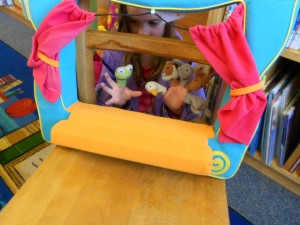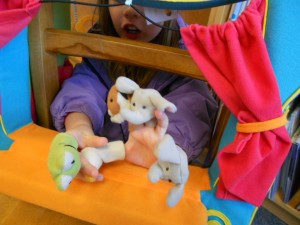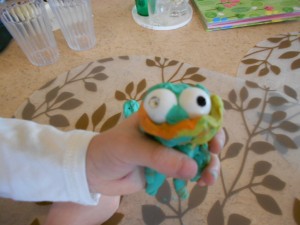Pinocchio Play-of-the-Day
Pinocchio is not just a puppet, he is a character with a dream. Even though he’s made of wood, he shares many characteristics with kids and adults too.
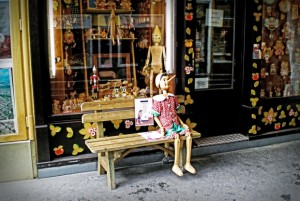 Gepetto, a wood carver, creates a boy puppet. He loves Pinocchio very much but Pinocchio, like real children, doesn’t like to be controlled by others and yet is sometimes easy to manipulate. He makes mistakes, goes to school, and has adventures, both good and bad. When under stress, he tells lies and his nose grows longer and longer. Pinocchio learns along the way and, aided by the Fairy with Blue Hair, becomes real.
Gepetto, a wood carver, creates a boy puppet. He loves Pinocchio very much but Pinocchio, like real children, doesn’t like to be controlled by others and yet is sometimes easy to manipulate. He makes mistakes, goes to school, and has adventures, both good and bad. When under stress, he tells lies and his nose grows longer and longer. Pinocchio learns along the way and, aided by the Fairy with Blue Hair, becomes real.
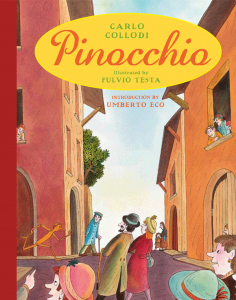 The story of Pinocchio has been translated into more than 240 languages. Most of us are familiar with the Disney version, but there are other versions based on the original. This translation, by Geoffrey Brock, has more than fifty gorgeous watercolor illustrations of Fulvio Testa. You can read or tell the story to your child and maybe use a puppet to help.
The story of Pinocchio has been translated into more than 240 languages. Most of us are familiar with the Disney version, but there are other versions based on the original. This translation, by Geoffrey Brock, has more than fifty gorgeous watercolor illustrations of Fulvio Testa. You can read or tell the story to your child and maybe use a puppet to help.
Children do not understand the symbolism of the story but they can relate to the struggles. One of the challenges is what is real. Figuring out what is fantasy and what is reality isn’t easy. Kids use their imagination to help make sense of the world around them. In the words of John Holt, from the book How Children Learn, “Children…are like someone trying to put together a jigsaw puzzle with only 10 percent of the pieces–they have to invent imaginary pieces to fill in all the gaps….They have to make some kind of sense of it right now.”
Imaginary and pretend play is an important activity for kids. You and your child can make puppets out of socks, paper bags, wooden spools, popsicle sticks, styrofoam take-out containers, and fingers and hands. The video below has some easy instructions for little puppets. While the puppets have adventures, kids talk, interact with others, solve problems, move their bodies, explore emotions, make brain connections, and more. You can see the imagination at work play in this version of Jack and the Beanstalk. At your house today, can the puppets come out for some play?

